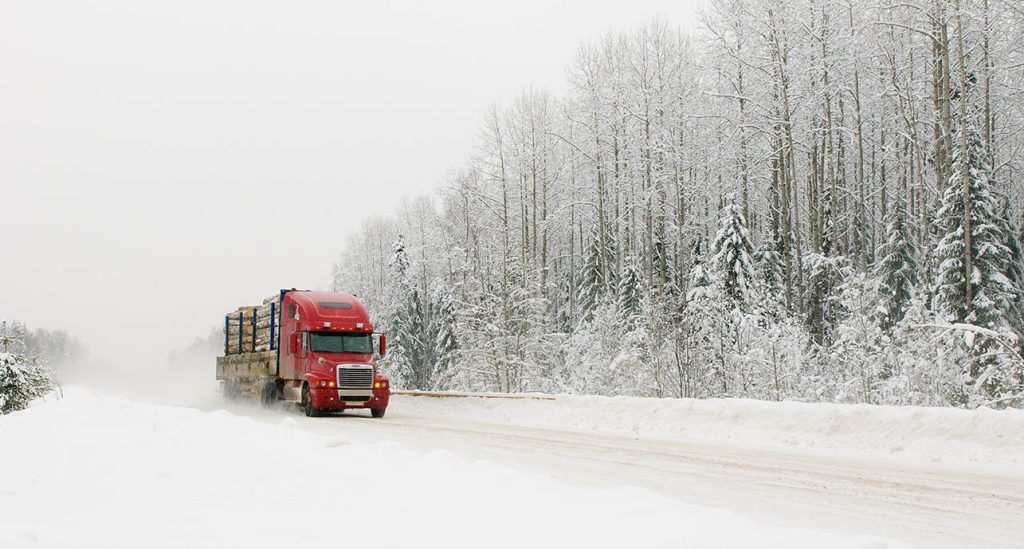The profession of driving makes it easy to count on employment in the United States. Many companies, including HMD Trucking, are hiring nationwide. If you are interested in trucking jobs, learn more at: https://www.hmdtrucking.com/.
The industry in which we work, and with which we are familiar, is difficult. But it tends to get even tougher during the coldest months of the year.
Rates that allow work to be done during the cooler days of June and July stop working in December. For companies with little experience who can’t avoid unnecessary price increases, this can be a grim period.
What happens to the trucking industry in the winter?
As the brisk winter air sweeps across the United States, the freight industry is often changed in several ways. Depending on your location, however, the intensity of the transformations can vary.
For instance, those of us in the Southwest shipping goods from Albuquerque, New Mexico to nearby clients, may not even register the subtle winter effects. While states like, Minnesota, North Dakota, New York and Michigan all experience more drastic seasonal variations.
No matter what location you are in, you cannot avoid the negative impact that winter weather brings to supply chains. It is important to understand the consequences of winter on trucking around America. Winter exerts a significant impact on the trucking industry, as icy roads, blizzards, and adverse weather conditions can disrupt schedules and pose safety risks, affecting the timely transport of crucial loads for truck drivers.
Therefore, we should be aware of the four main difficulties that winter brings to the transport system – particularly to, from, and around the northern states:

1. A general lack of sunshine.
As we amble towards December 21 and the winter solstice, the days seemingly grow darker and days have less of the essential sunlight required for maintaining numerous important trucking tasks. Therefore, apart from the new picture on the calendar in your office, the tangible signal of the new season change is seen in the total hours of sun exposure we acquire every day.
And even though for UV tanning studios and lightbulb manufacturers, the dwindling sunbeams can be a welcome after-effect, it certainly isn’t advantageous for trucking. Although, for most supply chain occupations and in most areas, a decrease in daylight of a several hours won’t spell total disaster.
Yet there are two primary means by which a decrease of sunlight can impact your haulage chain.
1. Truckers can’t drive as far as they can during the warm season
During the winter months, truck drivers are slowed down due to increased periods of darkness, not allowing them to move freight as promptly as they would in other months. This is because the rules governing truck drivers state that they can only drive their loads for 11 hours in a 24-hour period, limiting their productivity when darkness has the ability to decrease speed.
2. Oversize loads cannot be hauled in the dark
If you have to work with oversized loads, you should be aware that they cannot be transported at night.
While larger than usual freight guidelines might change from one state to another, by far most of them limit OD freight transportation to sunshine hours.
2. Very cold temperatures.
If you’ve ever experienced winter in the northern parts of our country, say between November through April, you know just how harsh and unforgiving the cold can be. Temperatures can drop to a bone-chilling -10 to -30 degrees, and that’s not including wind chill! These dangerous environmental conditions make maneuvering semi-trailers quite difficult and puts a tremendous strain on their engines. As a result, trucking companies and drivers typically face a considerable challenge in terms of making the best out of their allotted hours of service (HOS).
Because of the extra risks posed to the trucking industry by cold weather, truck drivers become more hesitant about taking to the highways in those regions. This, in turn, causes freight rates to increase with the arrival of winter, particularly in northern areas. This is why it’s essential to plan for potential changes before winter sets in. Expect that your trucking rates may go up if this situation arises.
Although temperature extremes don’t greatly affect shipping costs in southern parts of our country, they can cause an increased burden on refrigerated and tarped cargo in the north. Therefore, it’s crucial that you account for such eventualities and plan accordingly.
Also Read: Buy BMW Tyres At Best Price
3. Extremely unpredictable weather
In certain parts of our country and around the world, winter brings blizzards, bitter winds, and empty parking lots covered with snow. Nevertheless, in some regions of the United States, the winter season is quite mild.
For this reason, when transportation companies deliver shipments to these areas during the winter months, they often encounter unexpected delays and disruptions. Even the most prepared and organized carriers may struggle to battle their way through a severe snowstorm or against a gust of wind.
In times like these, truckers are forced to wait for the weather to pass, which makes it particularly difficult to adhere to the Hours of Service (HOS). As a result, many truckers opt to keep away from winter-prone locations where these extreme weather conditions are common.
Furthermore, when you ship cargoes with an open deck, inclement weather may force you to pay extra for tarping services. Truckers may have no choice but to apply tarps in protected areas if open deck loads are not protected or you don’t provide the support they need to do the job.
Therefore, if you plan to ship to the northern states this winter, know that transportation rates may go up in one way or another.
4. Difficult and unsafe driving conditions
In many areas of the country, the winter season is bringing with it the potential for greatly increased risks to road safety. With icy pavements, snow banks and reduced visibility, the danger of an accident – and especially when that accident involves a 40,000 pound hauling load – can be a real threat.
In acknowledgement of these challenges, truckers should always take extra care and plan for slower passage through these winter regions. Delivery times may be impacted as a result, but we suggest that the focus should remain on the safety of all drivers – including your own. As with all important shipments, it is important to keep receivers apprised of any possible delays, so that they can be prepared and plan accordingly.






